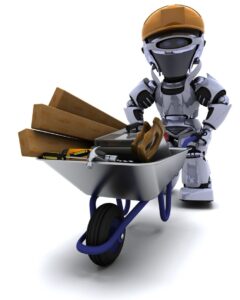
Introduction
In today’s fast-paced world, robotics and automation are transforming industries at an unprecedented rate. These technological advancements are not just futuristic concepts but tangible realities reshaping the way businesses operate. From manufacturing to logistics, the integration of robots and automated systems is revolutionizing efficiency, productivity, and innovation.
The Rise of Robotics and Automation
Initially, the advent of robotics in industry was met with skepticism and caution. However, as technology advanced, so did the capabilities of robots and automated systems. No longer confined to repetitive, mundane tasks, modern robots possess sophisticated abilities such as machine learning and artificial intelligence. These advancements allow them to perform complex tasks with remarkable precision and adaptability.
Moreover, the cost-effectiveness of these technologies has significantly improved. In the past, only large corporations could afford to implement robotics and automation. Today, even small and medium-sized enterprises can leverage these innovations to enhance their operations. This democratization of technology is leveling the playing field, fostering competition and spurring economic growth.
Enhancing Efficiency and Productivity
One of the most compelling reasons for the widespread adoption of robotics and automation is the dramatic increase in efficiency and productivity. Robots can operate 24/7 without fatigue, performing tasks with consistent accuracy and speed. This capability is particularly beneficial in manufacturing, where production lines can run continuously, reducing downtime and maximizing output.
Additionally, automation streamlines processes by eliminating human error and variability. In logistics, for example, automated systems can manage inventory, sort packages, and optimize delivery routes with unparalleled precision. These improvements not only enhance productivity but also reduce operational costs, providing a significant return on investment.
Transforming the Workforce
While the rise of robotics and automation brings undeniable benefits, it also poses challenges to the workforce. The fear of job displacement is a legitimate concern as machines take over tasks traditionally performed by humans. However, this technological shift also creates new opportunities.
As routine jobs become automated, there is a growing demand for skilled workers who can design, program, and maintain these systems. Thus, the workforce is evolving, with an increasing emphasis on education and training in STEM (Science, Technology, Engineering, and Mathematics) fields. Companies are investing in upskilling their employees to adapt to this new landscape, fostering a culture of continuous learning and innovation.
Innovations Driving the Future
The future of robotics and automation is brimming with exciting possibilities. Advances in artificial intelligence are enabling robots to learn and adapt in real time, making them more versatile and capable of handling a wider range of tasks. Collaborative robots, or cobots, are designed to work alongside humans, enhancing human capabilities rather than replacing them.
Furthermore, the integration of the Internet of Things (IoT) with robotics is creating interconnected systems that can communicate and coordinate seamlessly. In smart factories, machines can autonomously adjust production processes based on real-time data, optimizing efficiency and reducing waste. These innovations are not just enhancing current operations but also paving the way for new business models and opportunities.
Overcoming Challenges
Despite the tremendous potential of robotics and automation, several challenges need to be addressed. Cybersecurity is a significant concern, as interconnected systems are vulnerable to cyberattacks. Ensuring the security and integrity of automated systems is crucial to prevent disruptions and safeguard sensitive data.
Additionally, the ethical implications of automation must be considered. As machines take on more roles, questions about accountability and decision-making arise. Establishing clear ethical guidelines and regulatory frameworks is essential to navigate these complexities responsibly.
Conclusion
Robotics and automation are undeniably transforming industries, driving efficiency, productivity, and innovation. While challenges exist, the opportunities far outweigh the risks. By embracing these technologies and preparing the workforce for the future, businesses can thrive in this new era of industrial revolution. The key lies in balancing technological advancement with ethical considerations and continuous learning, ensuring a prosperous and sustainable future for all
